PERINEURIOMA
|
Child Adult Muscle Ultrastructure |
Perineurioma: Adult
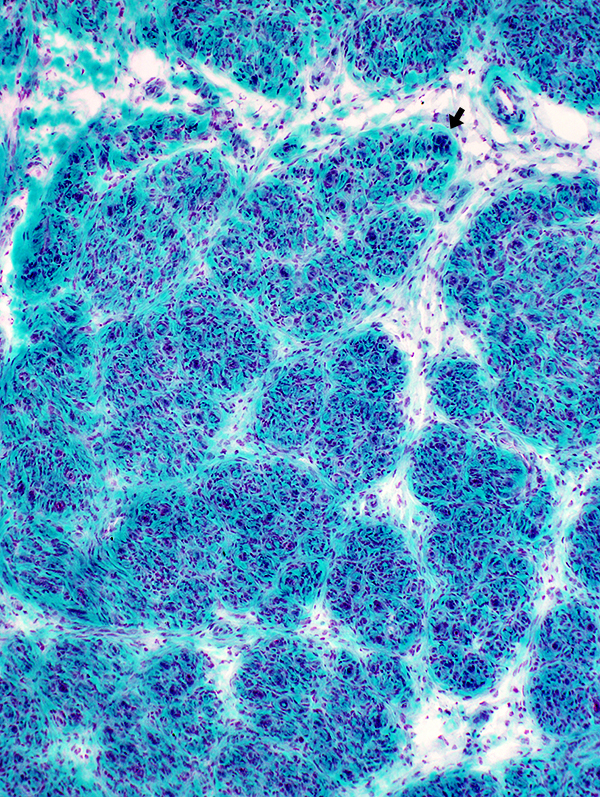 Gomori trichrome stain Perineurioma: Tissue organization Enlarged nerve with many, variably-sized, sub-fascicles Many capillaries (Arrow) Higher magnification (Right) shows many whorled pseudo-onion bulbs |
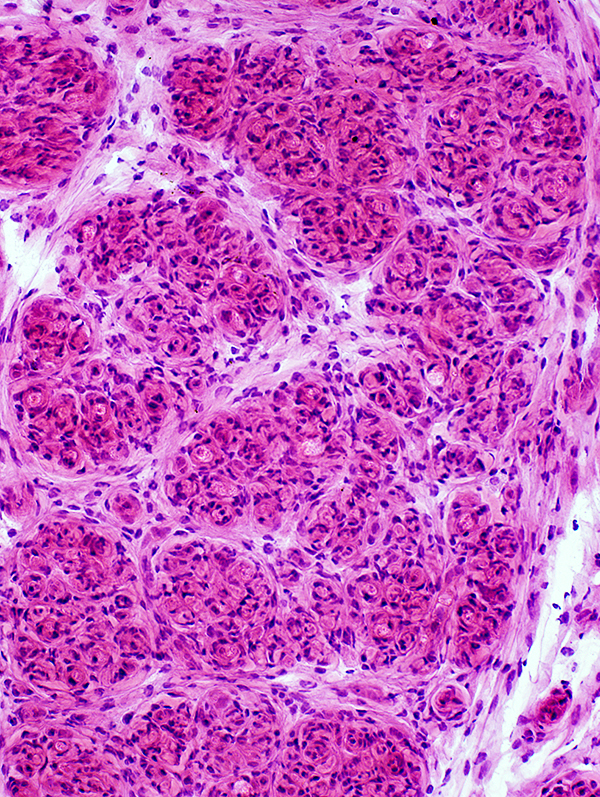 H&E stain |
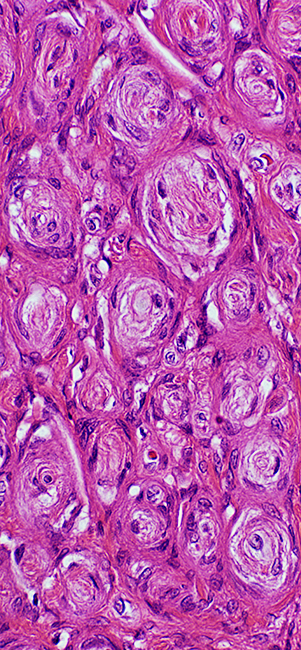 Whorled pseudo-onion bulbs
|
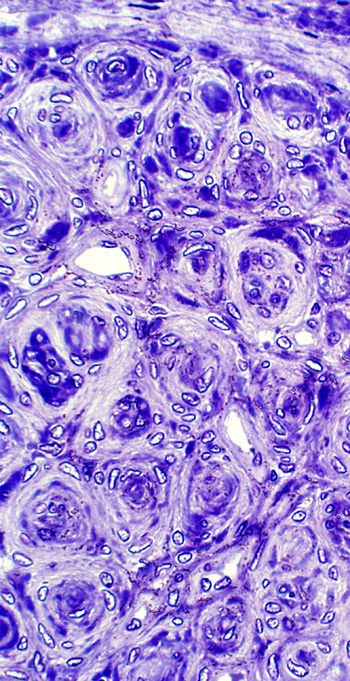
|
|
Variable types of axons in whorls: Some whorls have multiple small axons (Left); Other whorls contain large axons (Right) | |
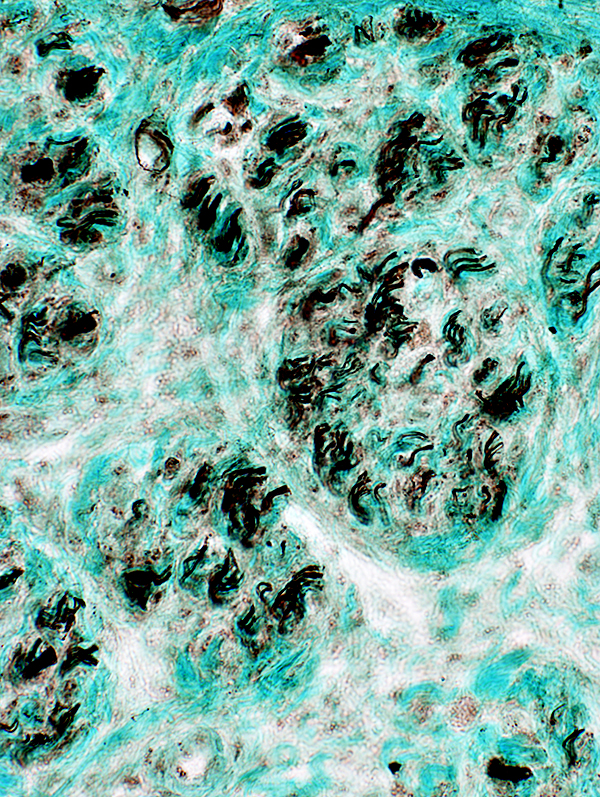 Neurofilament stain |
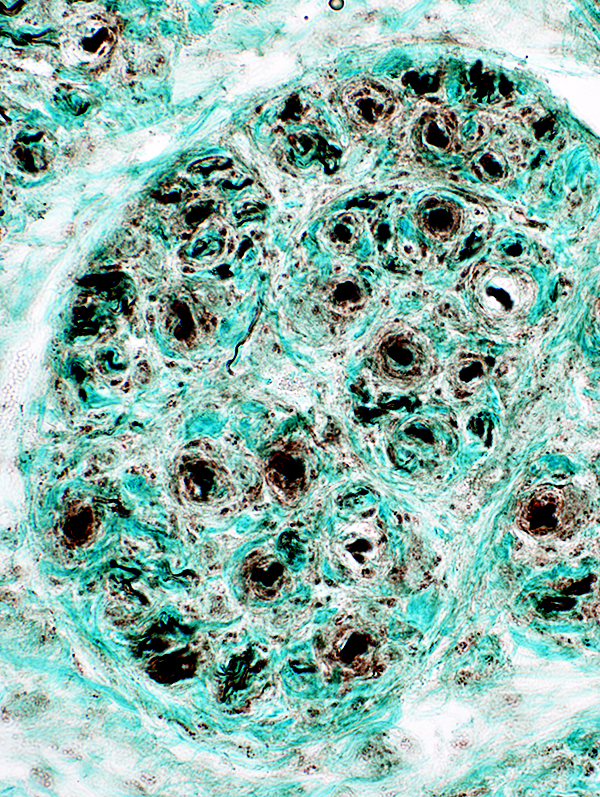 Neurofilament stain |
Differential fascicular involvement: More axons in some fascicles than others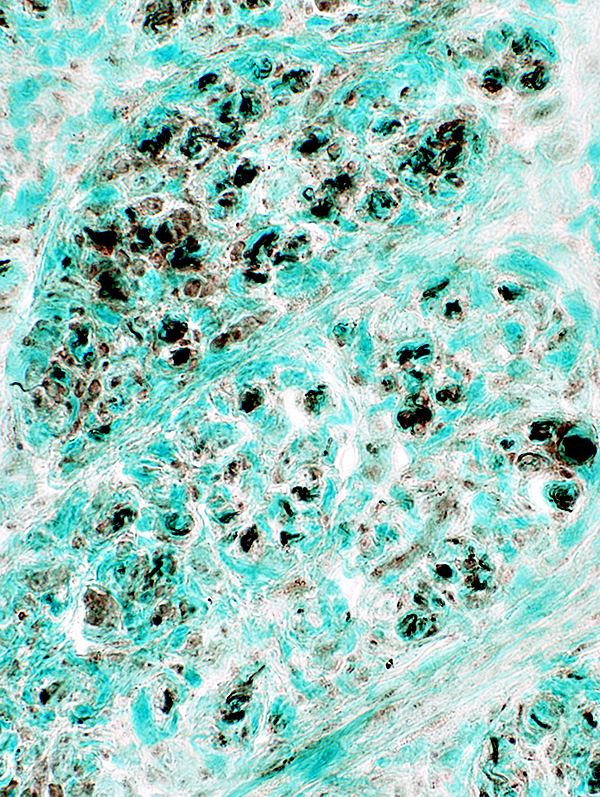 Neurofilament stain |
Some whorls contain myelinated axons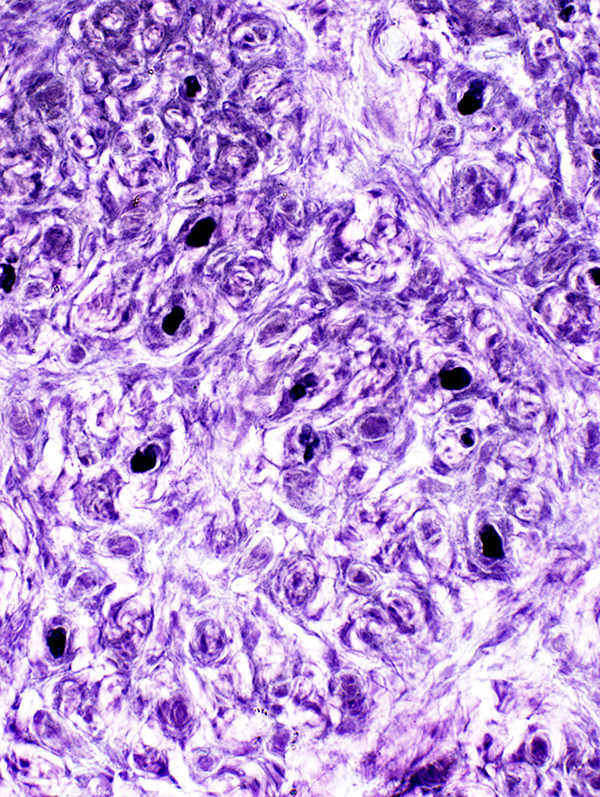 VvG stain |
Perineurioma: Many endoneurial vessels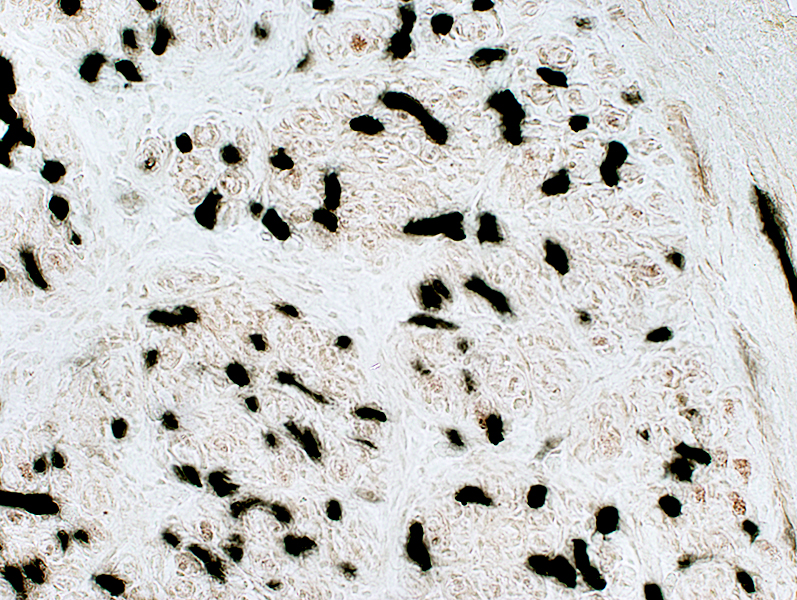 Alkaline phosphatase stain |
|
Epithelial Membrane Antigen (EMA) Perineurioma (Right): Staining of cells diffusely in endoneurium of enlarged nerve fascicle Normal nerve (Below): Staining in perineurium, but not endoneurium 
|
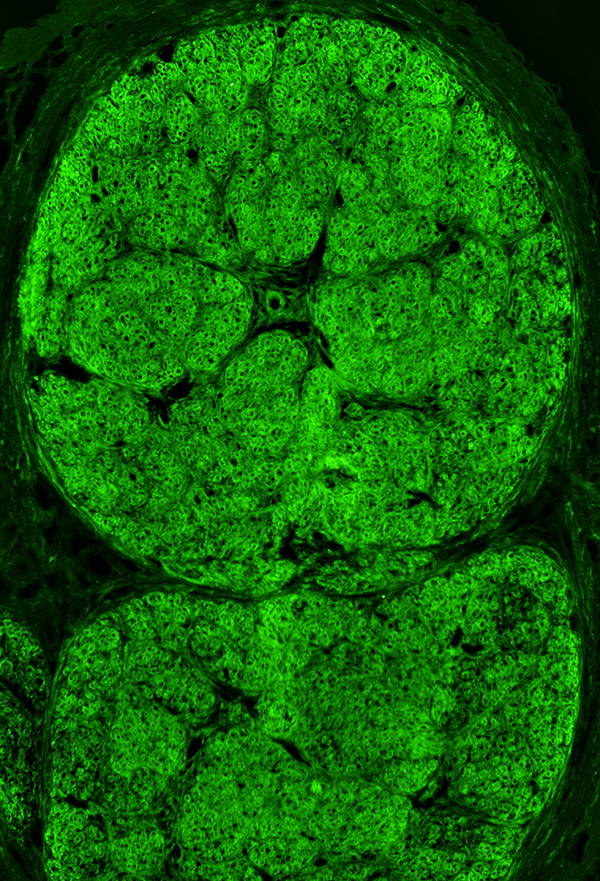
|
Perineurioma: EMA stains cells in whorls around axons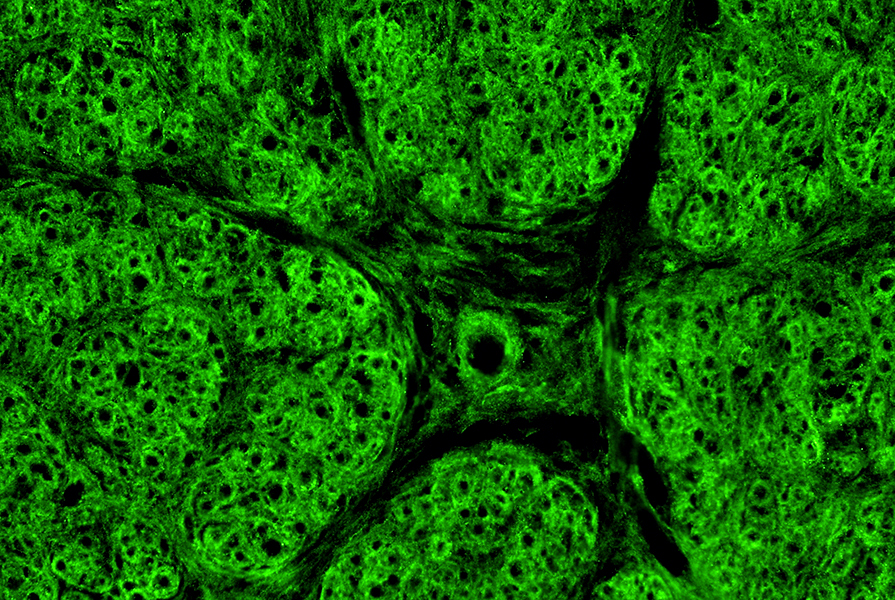
|
Perineurioma with axon loss: Collagen IV & Neurofilament stains Neurofilament Green; Collagen IV Red |
Perineurioma: Chronic denervation & reinnervation of muscle
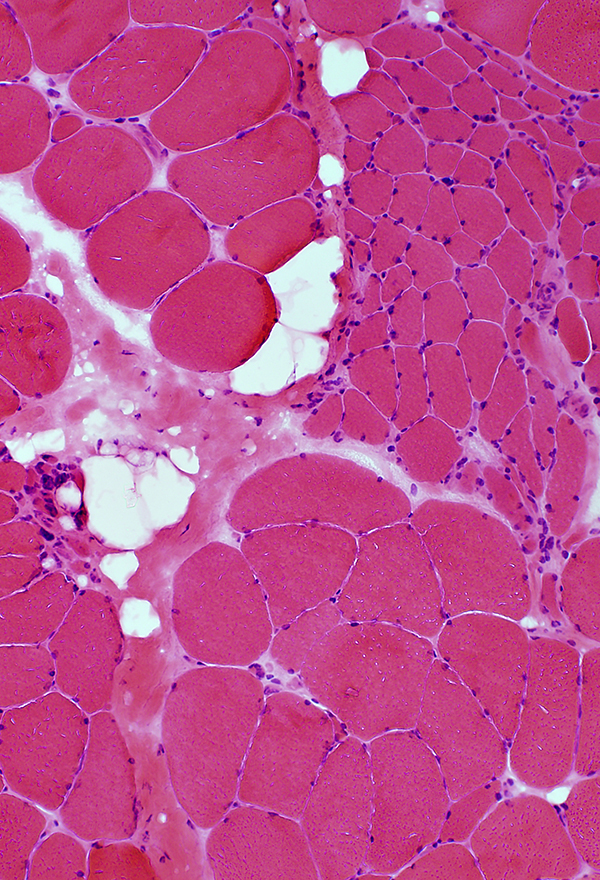 H&E stain |
Grouped Atrophy & Fiber type grouping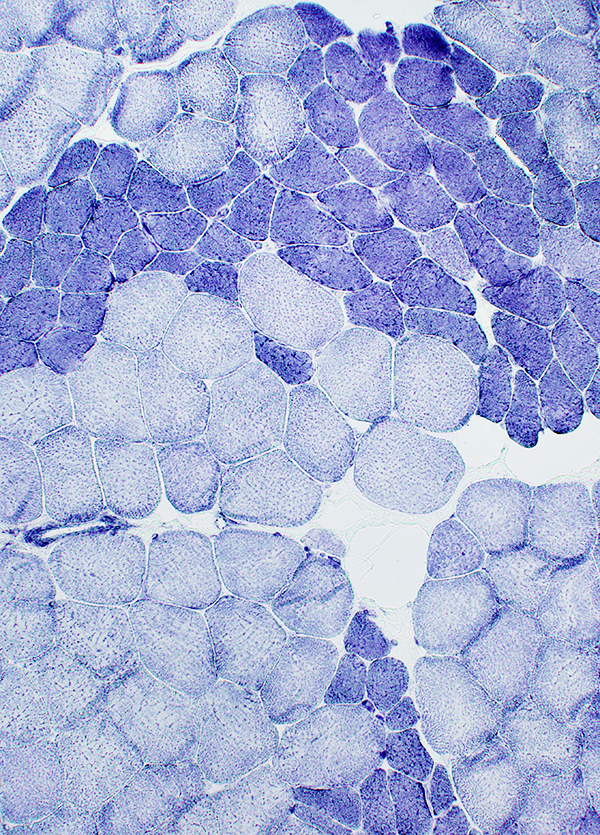 NADH stain |
Fiber type grouping: Large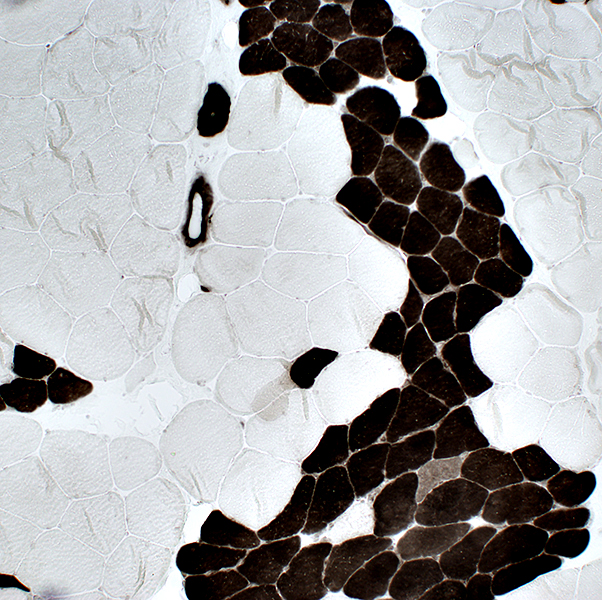 ATPase pH 4.3 stain |
Small angular fibers with targets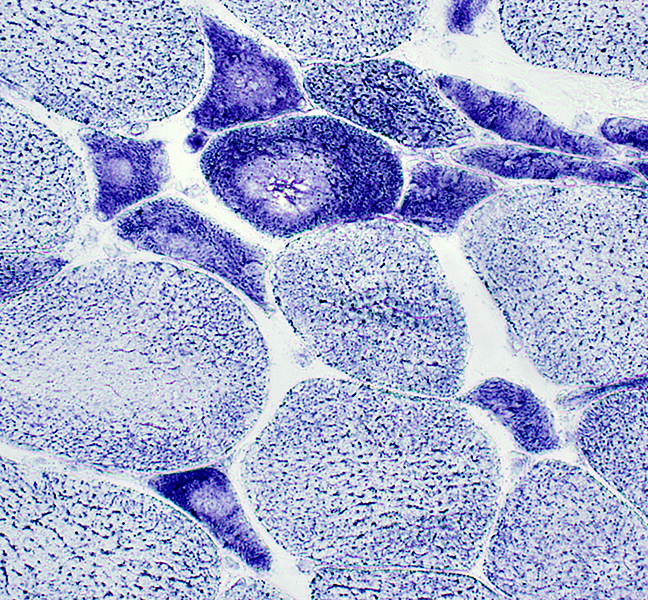 NADH stain |
Perineurioma: Child
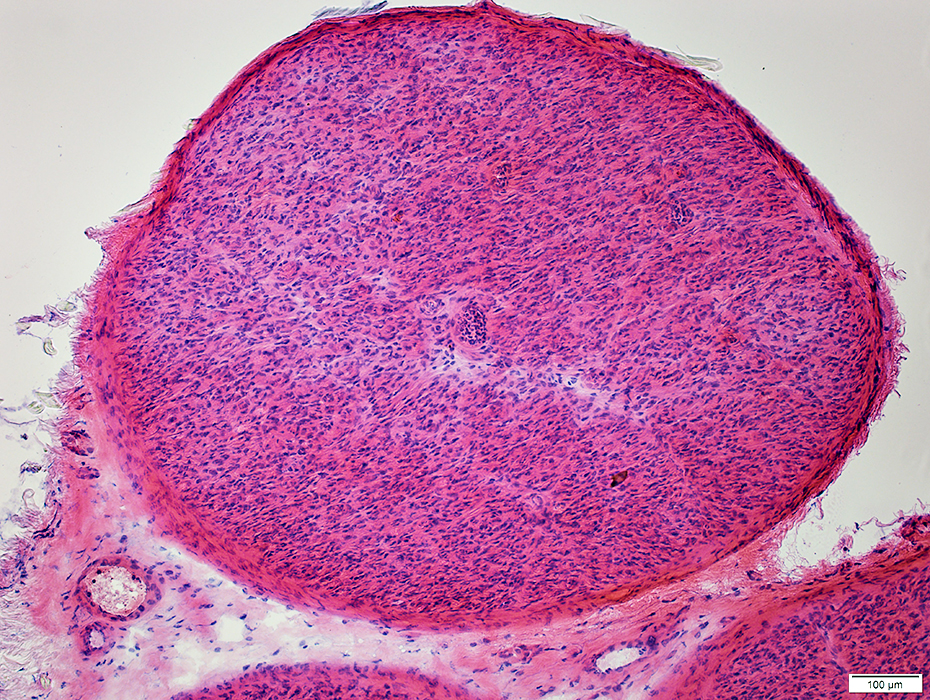 H&E stain |
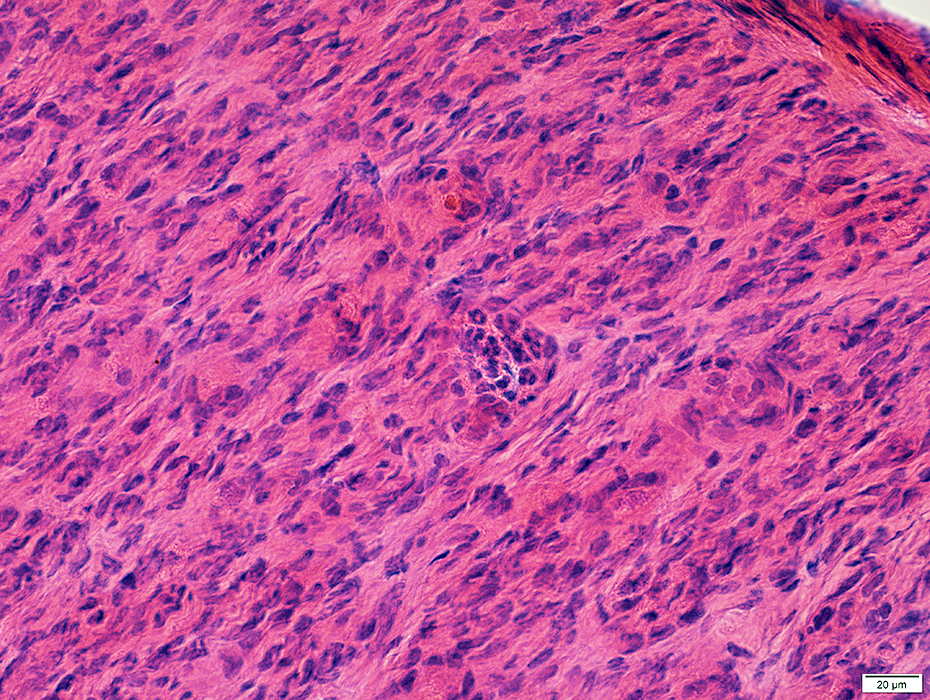 H&E stain |
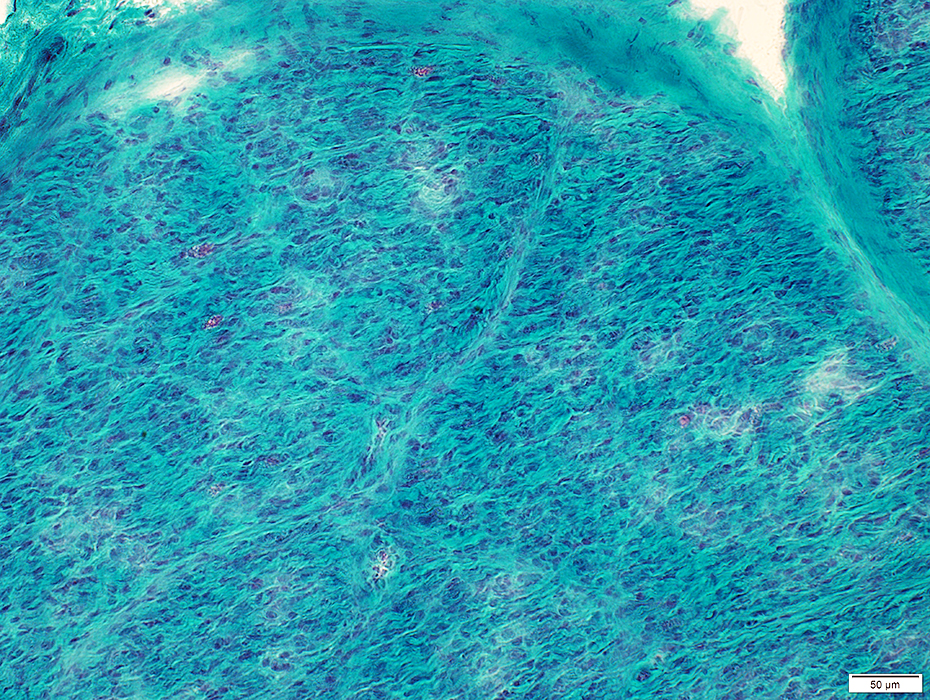 Gomori trichrome stain |
Endoneurium: Cellular; Loss of myelinated axons
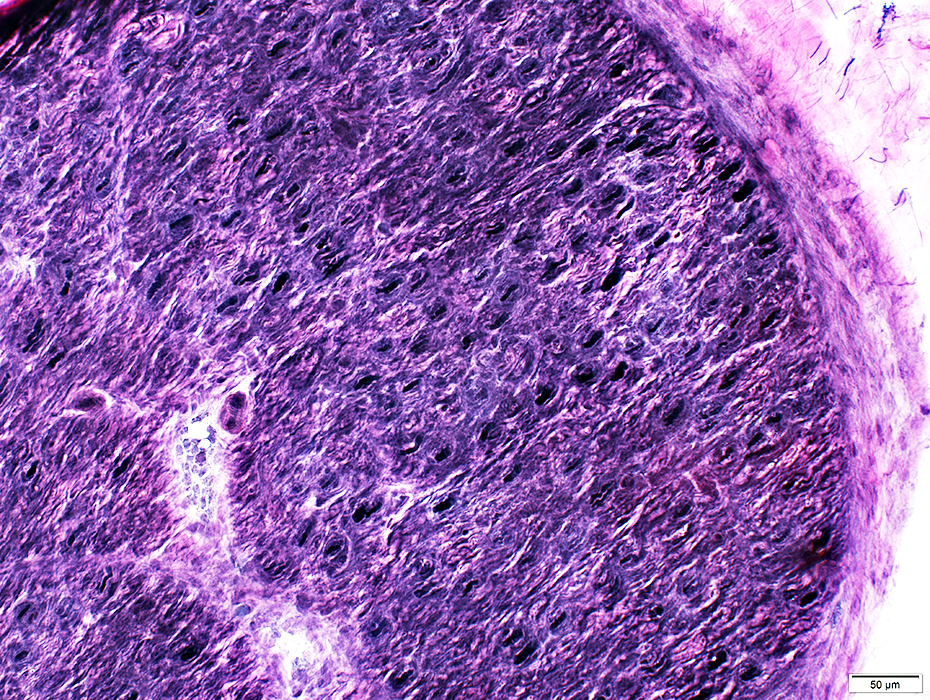 VvG stain |
Perineurioma: Many endoneurial vessels (Alkaline phosphatase positive)
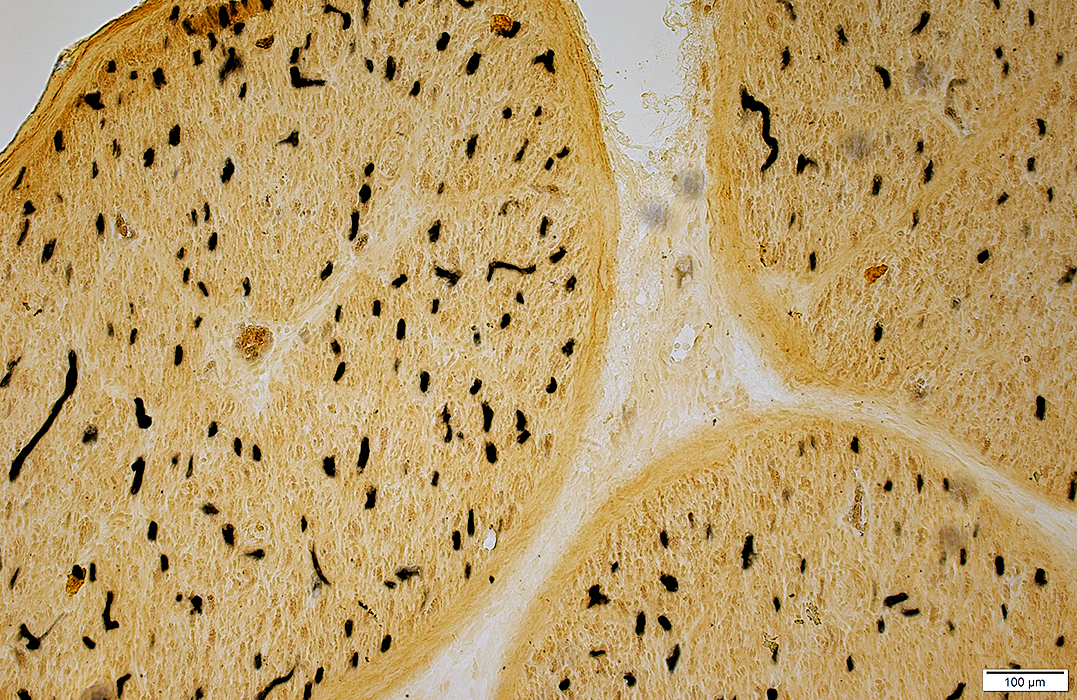 Alkaline phosphatase stain |
Perineurioma: Axon loss is varied among fascicles
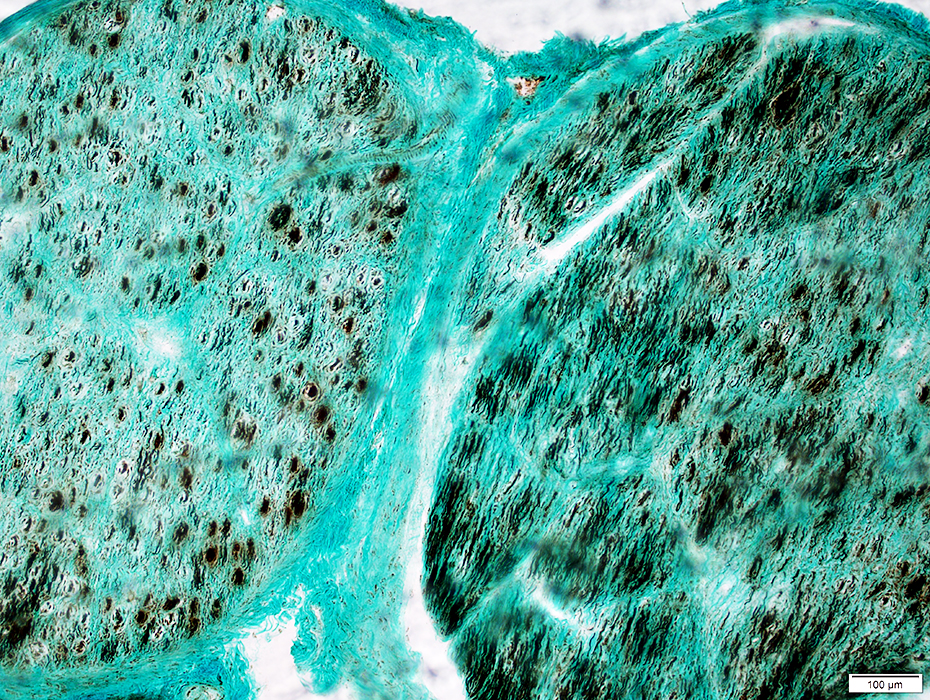 Neurofilament stain |
Perineurioma: ATPase positive small round structures
 ATPase pH 4.3 stain |
Perineurioma: Cells contain Epithelial Membrane Antigen (EMA)
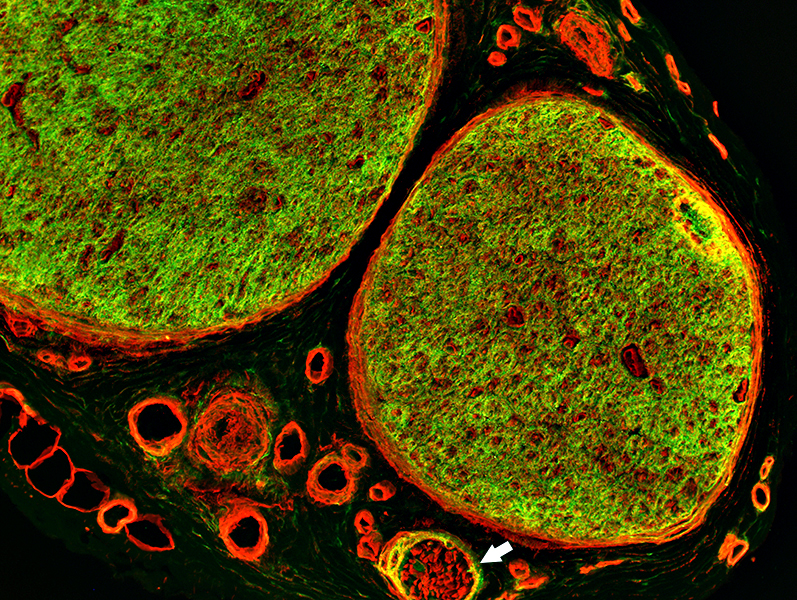 Epithelial Membrane Antigen (EMA) (Green); Collagen IV (Red) |
EMA staining
Abnormally present in endoneurial regions of 2 large fascicles
Lost, or reduced, in usual perineurial region
Small normal fascicle (Arrow at bottom): EMA only stains perineurium
Perineurioma
EMA staining in endoneurial regions
 Epithelial Membrane Antigen (EMA) (Green); Collagen IV (Red) |
Control nerve
Epithelial Membrane Antigen (EMA): Present in perineurium but not endoneurium (Green-Yellow)
Collagen IV: Present in perineurium & endoneurium (Red-Yellow)
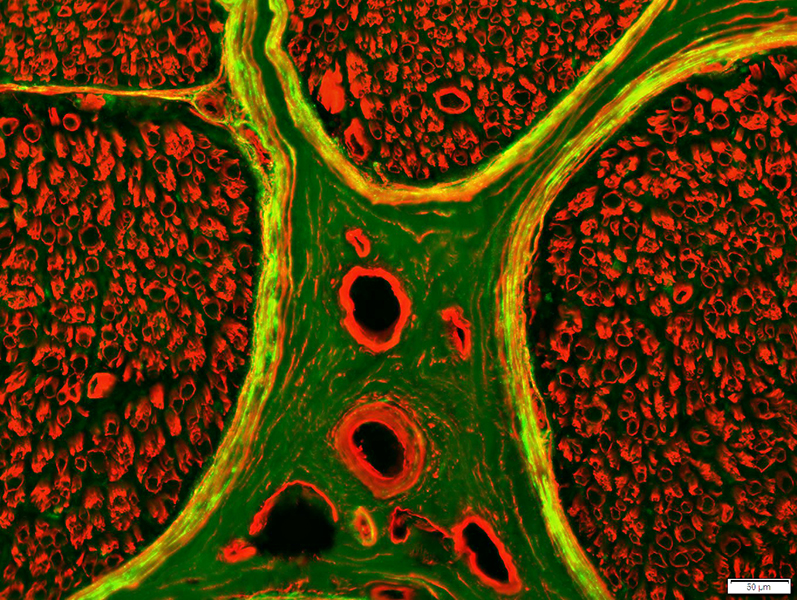 Epithelial Membrane Antigen (EMA) (Green); Collagen IV (Red) |
Perineurioma: Endoneurial Cell Population
Perineurioma: Abnormal (Loss NCAM in) Non-myelinating Schwann cells
Large axons (Green; Neurofilaments): Most are lost
Small axons (Green; Neurofilaments): Many may remain within perineurioma
Non-myelinating Schwann cells (Red; NCAM stain)
No staining: Small axons appear "Naked"
Present on ultrastructure
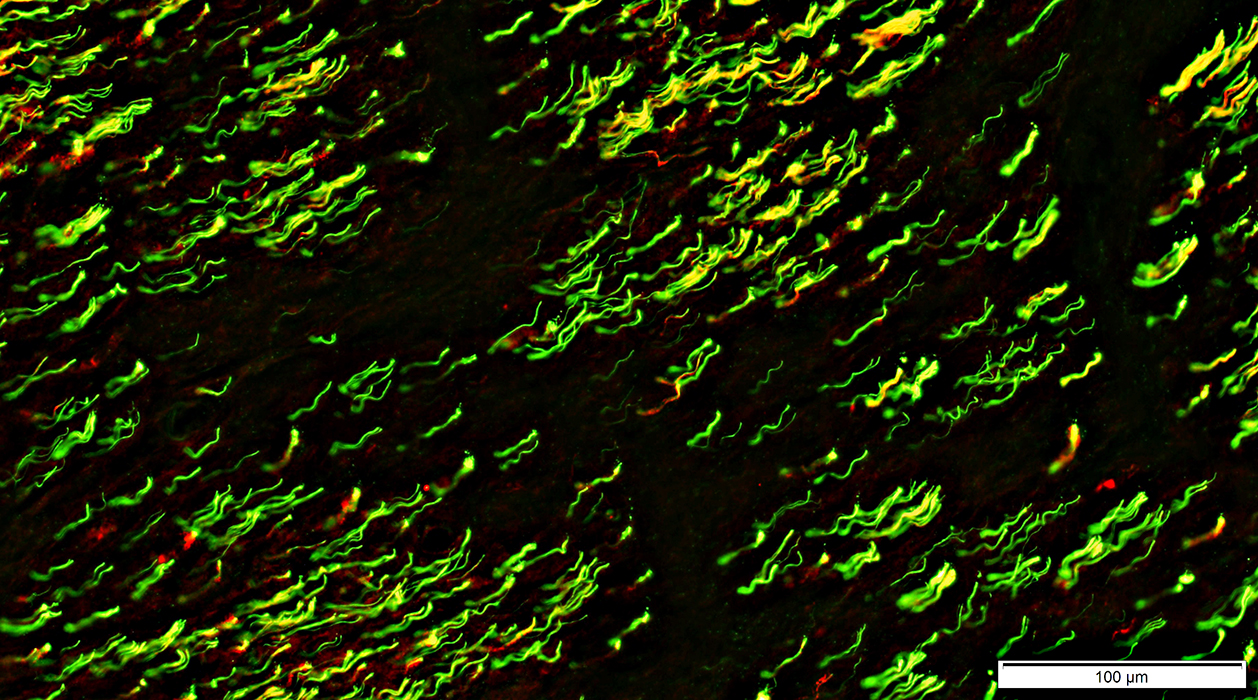 Neurofilaments (Green); NCAM (Red) |
|
Control nerve Large axons (Green; Neurofilaments): Many are present; No associated NCAM stain Small axons (Yellow; Neurofilaments): Associated with non-myelinating Schwann cells (Yellow) Non-myelinating Schwann cells (Red & Yellow; NCAM stain): Associated with small axons, normally present in clusters 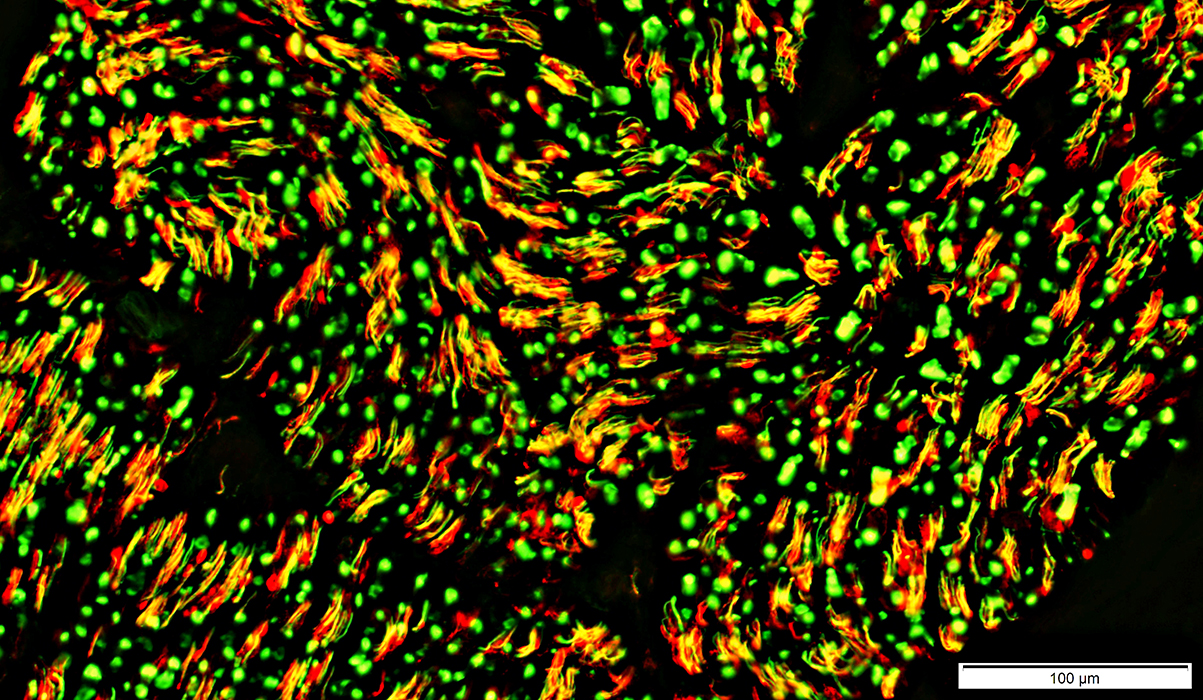 Neurofilaments (Green); NCAM (Red) |
|
Perineurioma Loss of NCAM-positive Non-myelinating Schwann cells in endoneurium 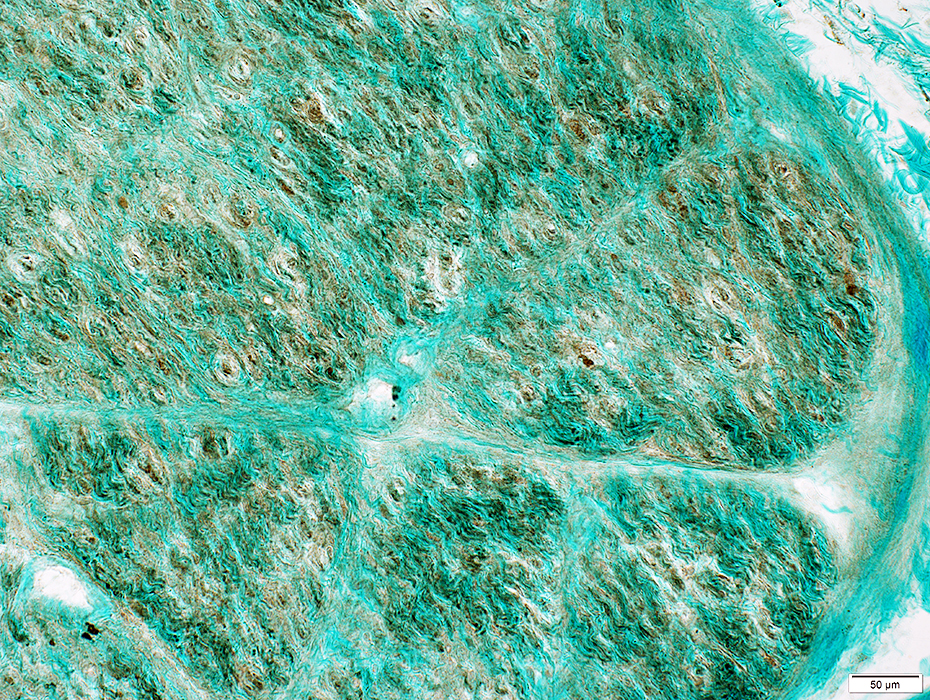 NCAM stain |
Control nerve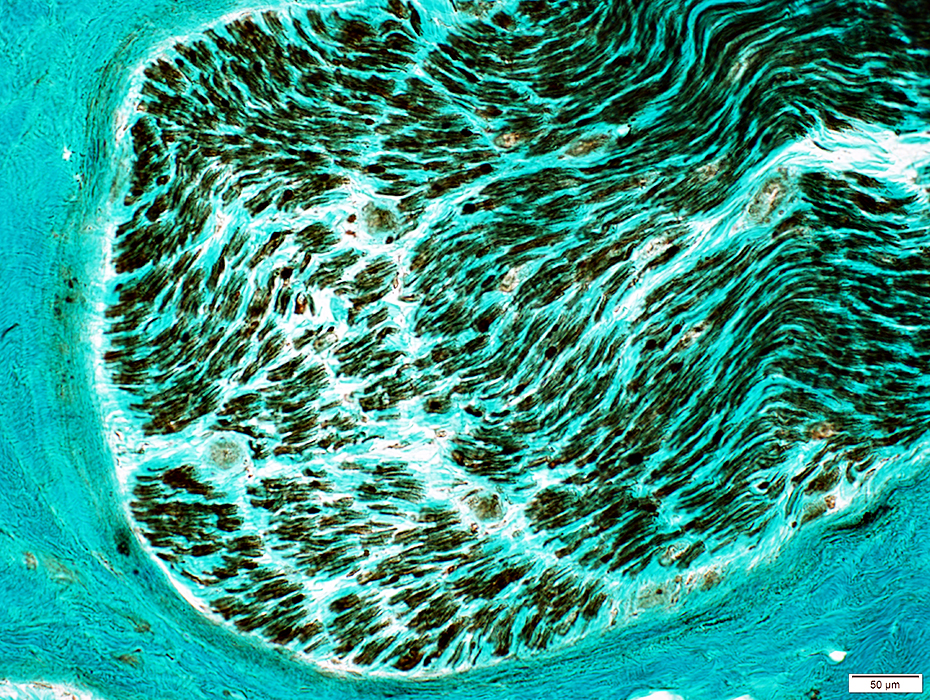 NCAM stain |
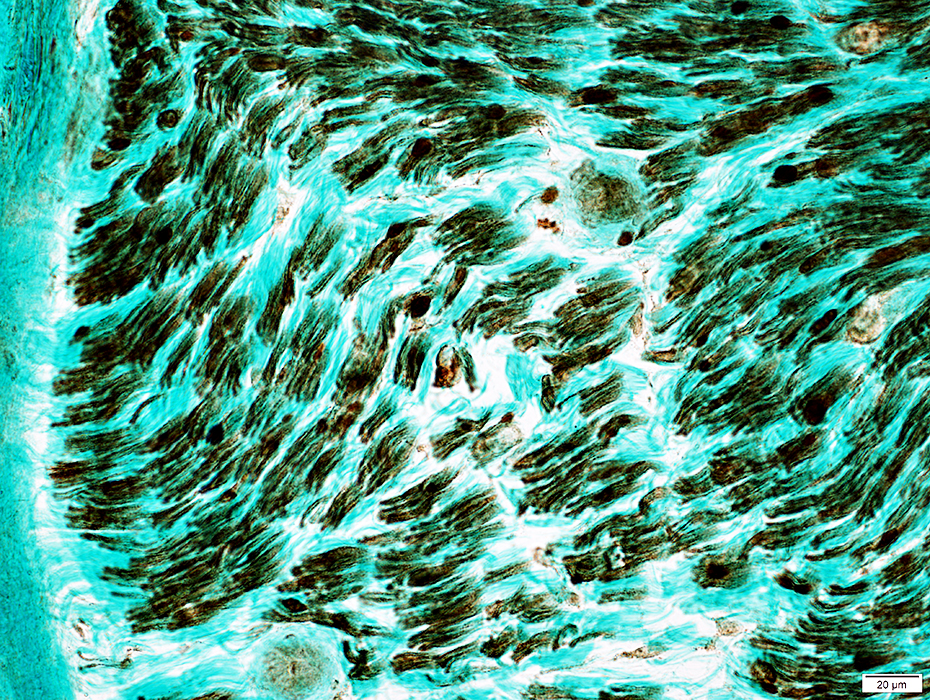 NCAM stain |
Perineurioma
Most large axons (Yellow) have associated myelin (P0 stain (Red)) surrounding them
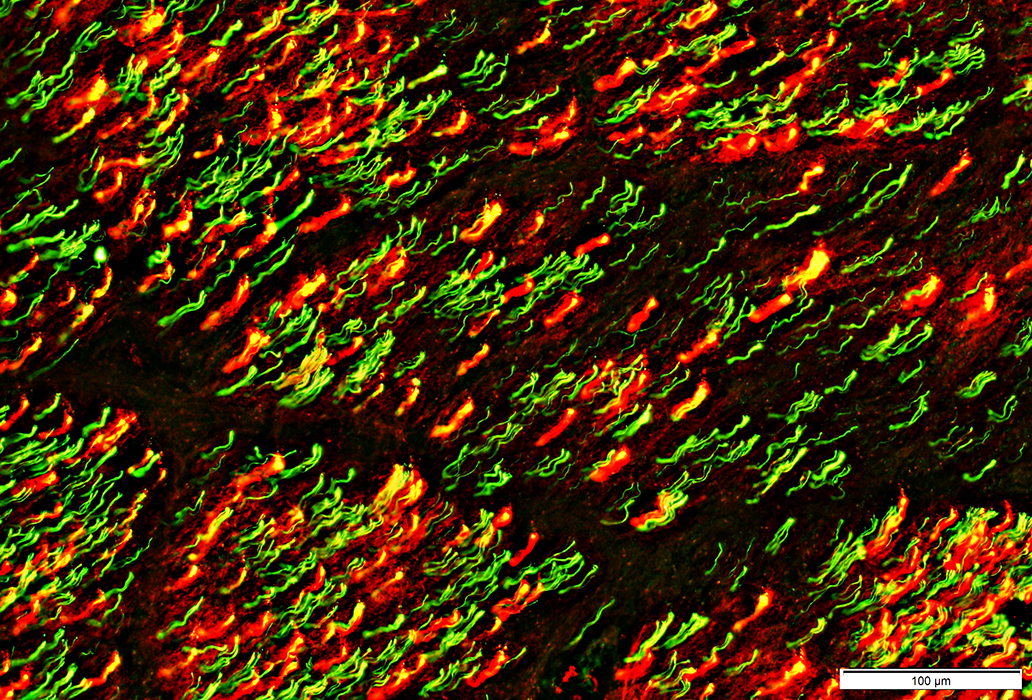 Neurofilament (Green) & P0 (Red) stain |
Perineurioma: Axons surrounded by regions of Perineurial tumor cells (EMA staining)
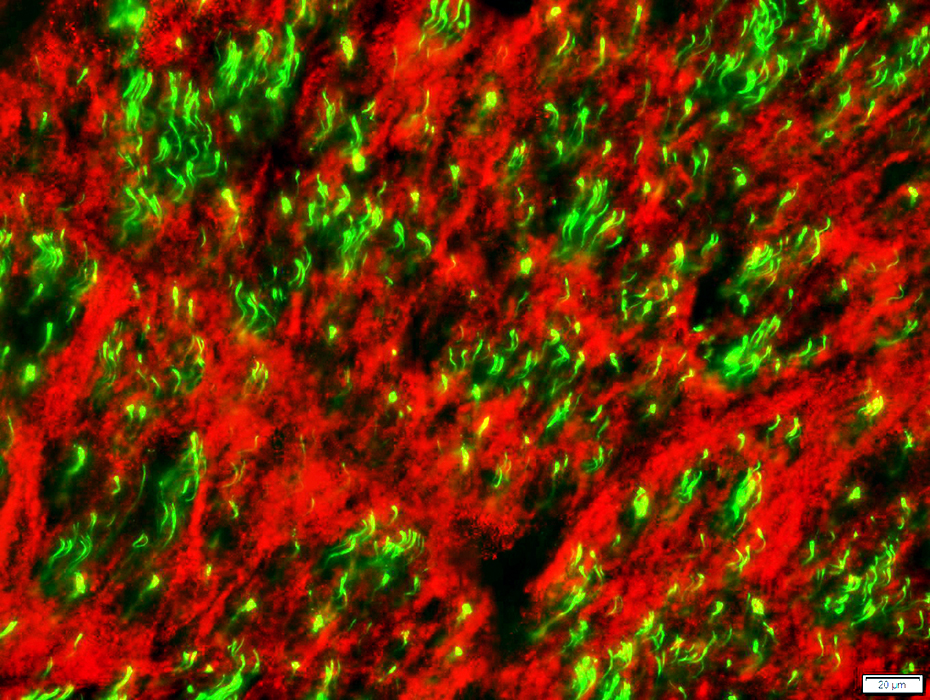 Neurofilament (Green) & EMA (Red) stain |
 From: R Schmidt |
Perineurioma: Layered whorls of cells around unmyelinated or myelinated axons
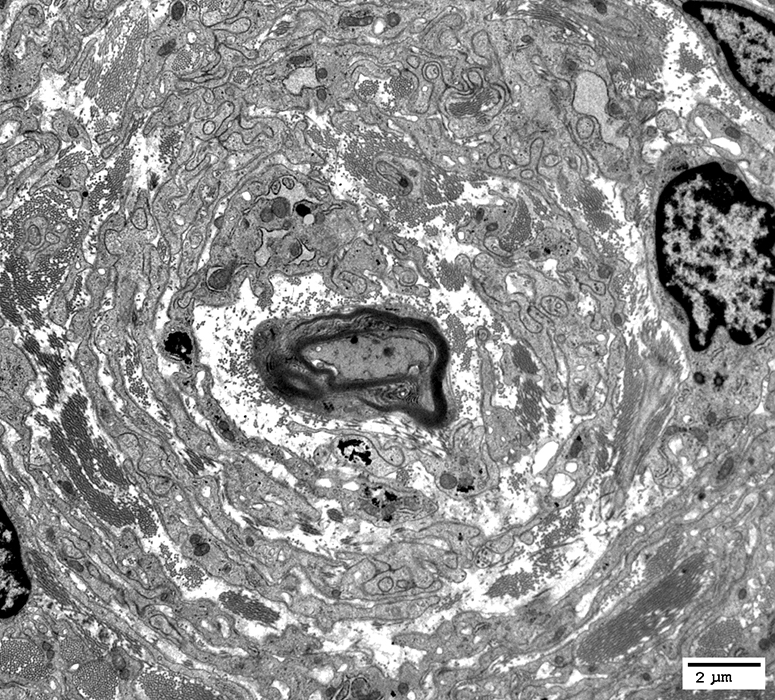 From: R Schmidt |
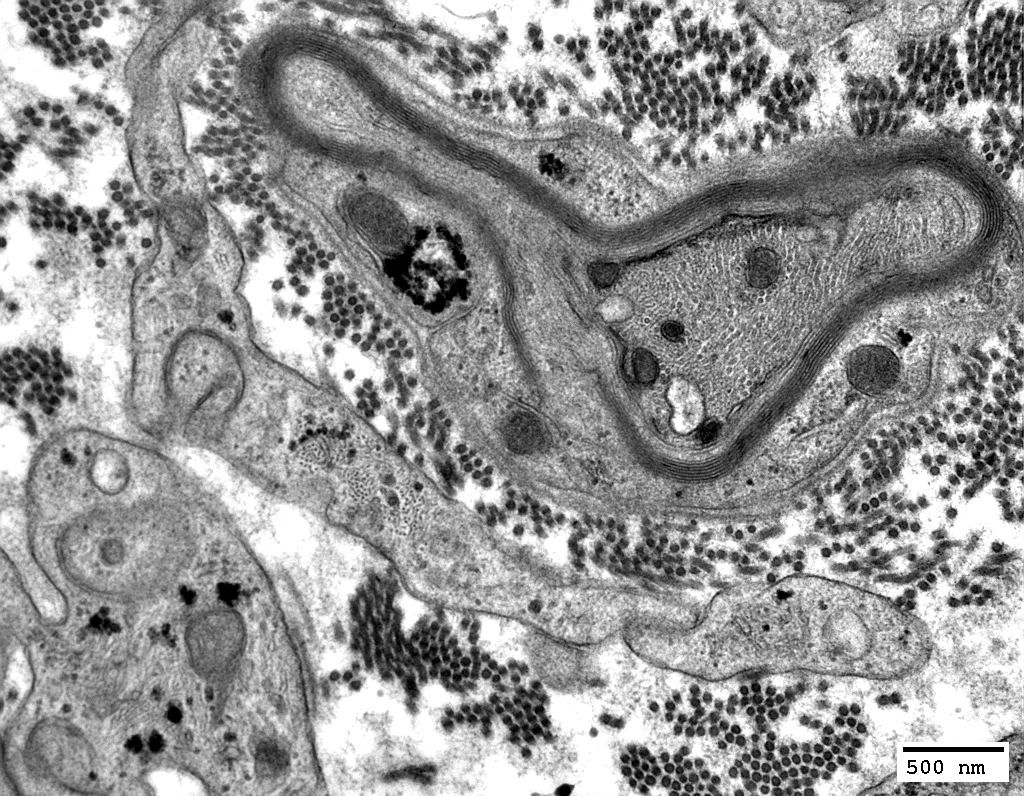 From: R Schmidt |
Center: Axon, Myelinated or non-myelinated
Around axon: Myelin with Schwann cell, or Schwann cell alone
Surround: Collagen
Periphery: Perineurial cell processes
Interdigitated
Basal lamina: Varied thickness
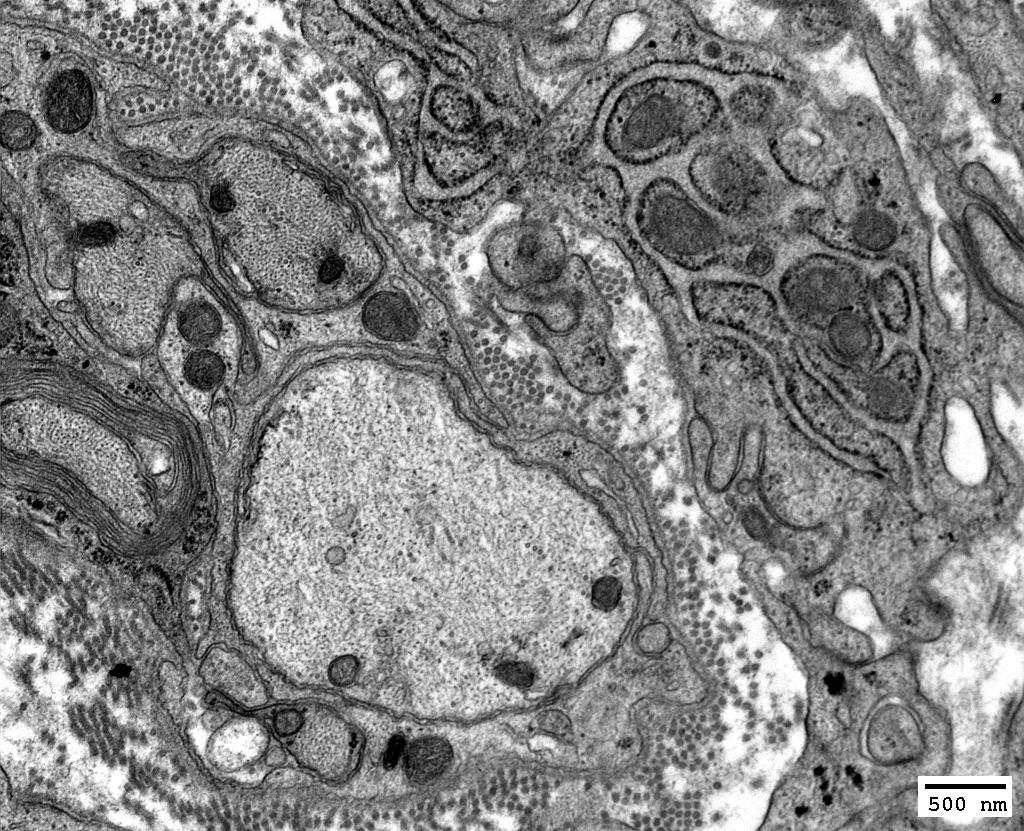 From: R Schmidt |
Surrounds only single axon
Not stained by NCAM
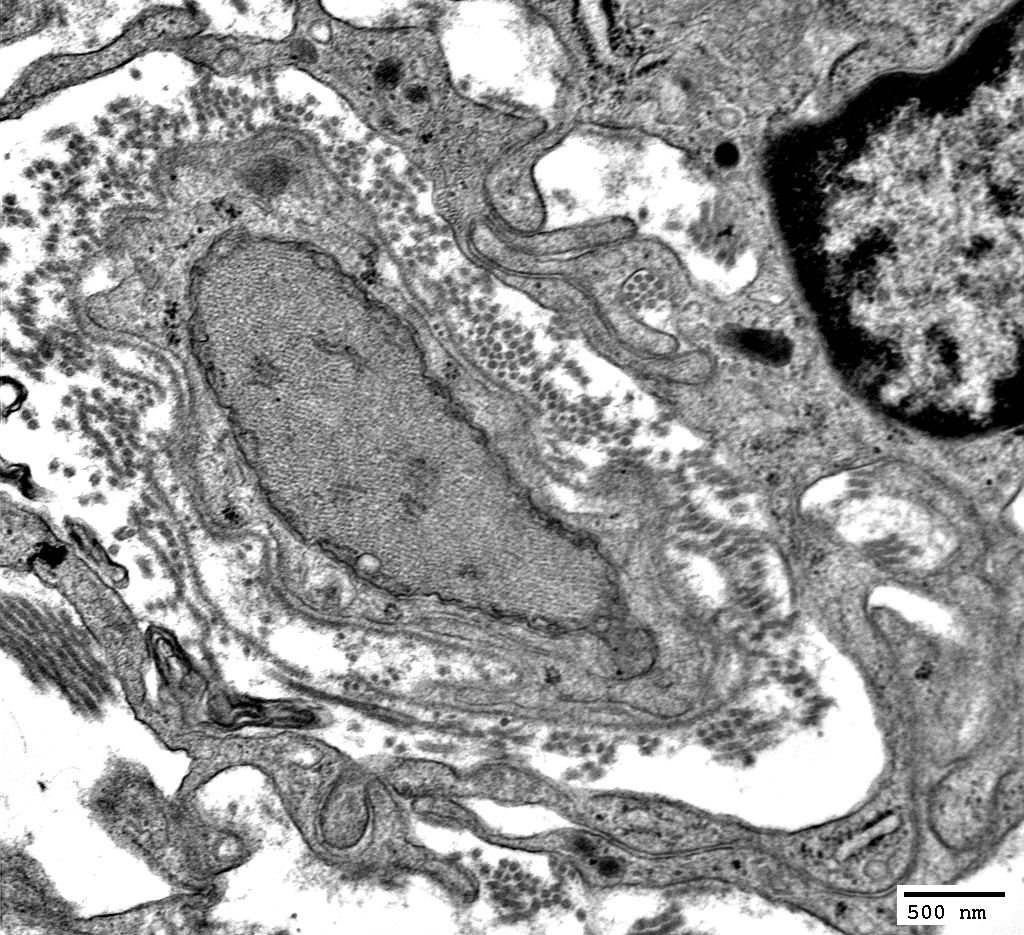 From: R Schmidt |
Perineurioma
Pinocytic vesicles in cell processes (Dark Arrow)Fusion of regions of apposed membranes (Light Arrow)
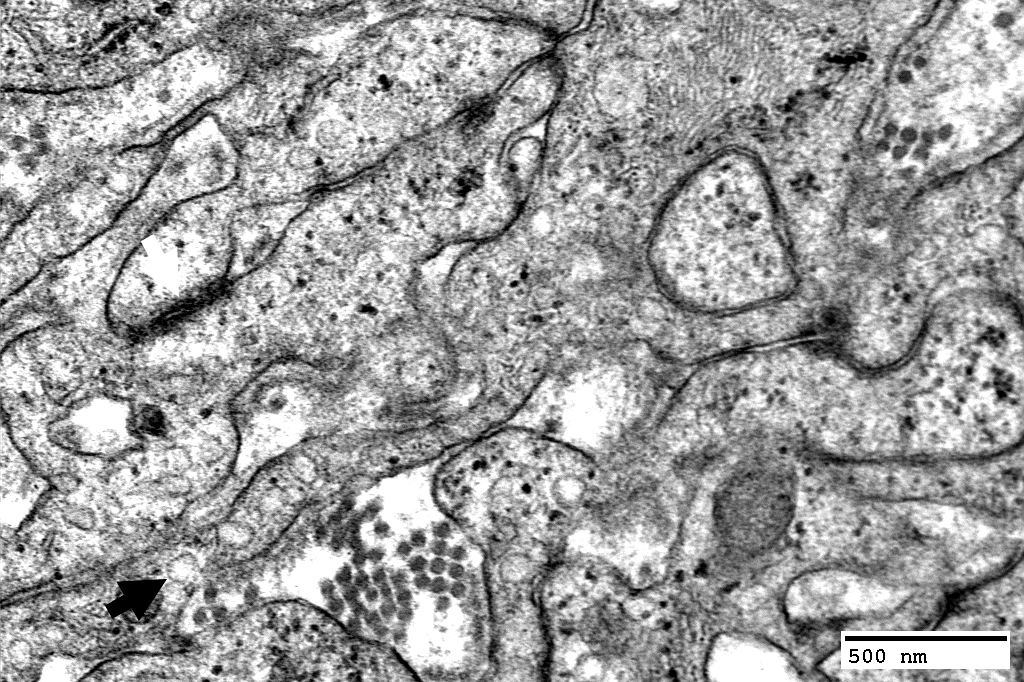 From: R Schmidt |
Return to Perineurioma
Return to Biopsy illustrations
Return to Neuromuscular Home Page
Return to Nerve biopsy
9/21/2021